Exam 2: Sensation and Perception
1/125
There's no tags or description
Looks like no tags are added yet.
Name | Mastery | Learn | Test | Matching | Spaced |
|---|
No study sessions yet.
126 Terms
contrast borders
contours that distinguish objects from their background
contrast borders are detected by...
ganglion cells
local edges
contrast borders that fall within a cells receptive field
texture contrast
distinct varying textures on objects/surfaces (though average intensity may be the same)
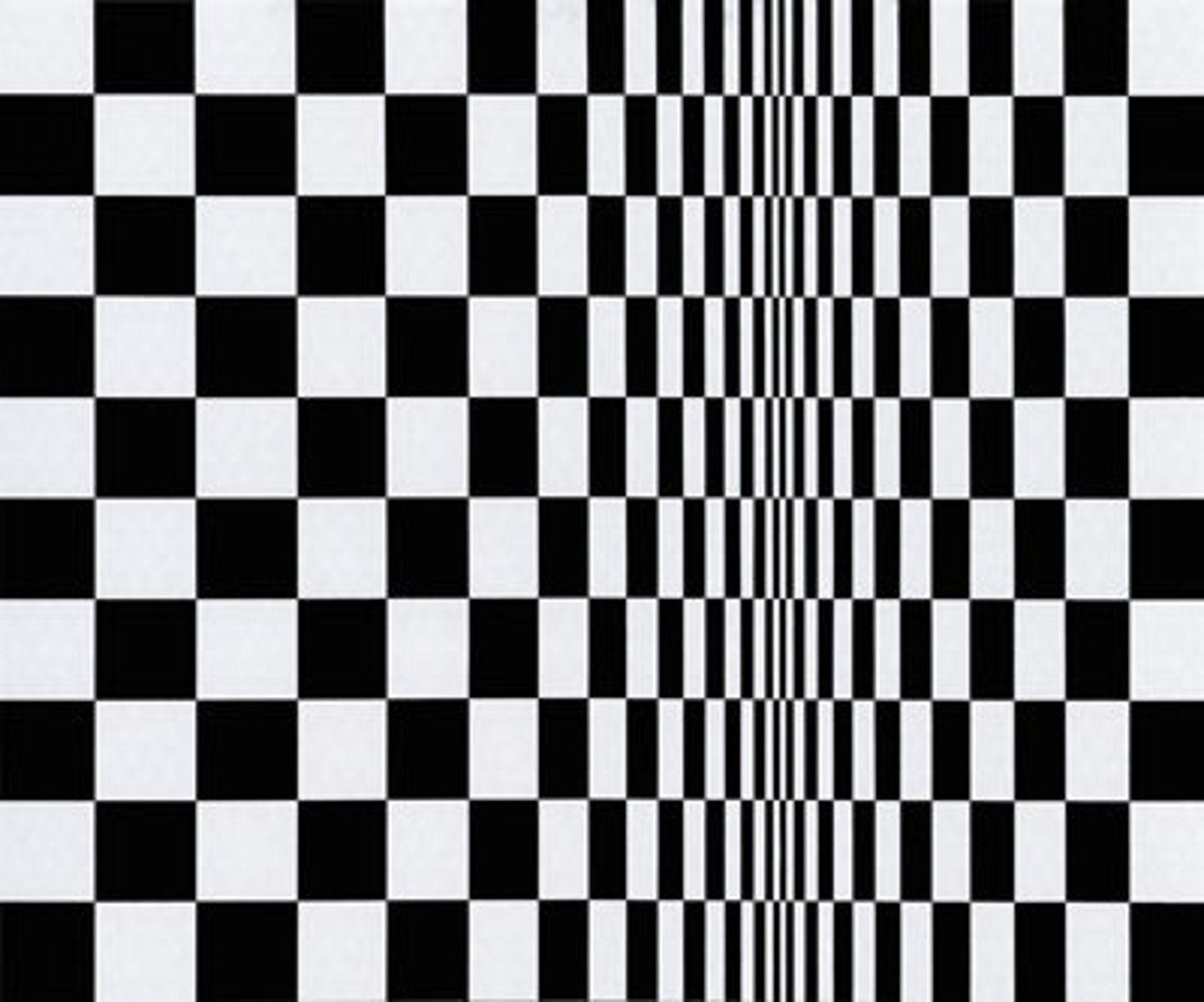
texture boundaries
perceptible differences in texture based on size, shape, orientation, color, or brightness
perceptual grouping
automatic grouping of elements that are visually "similar"
Gestalt movement motto
'the whole is greater than the sum of its parts'
apparent motion
principle used in animation, an object appears to move when it rapidly changes position
Law of SIMILARITY
objects that share visual qualities are grouped
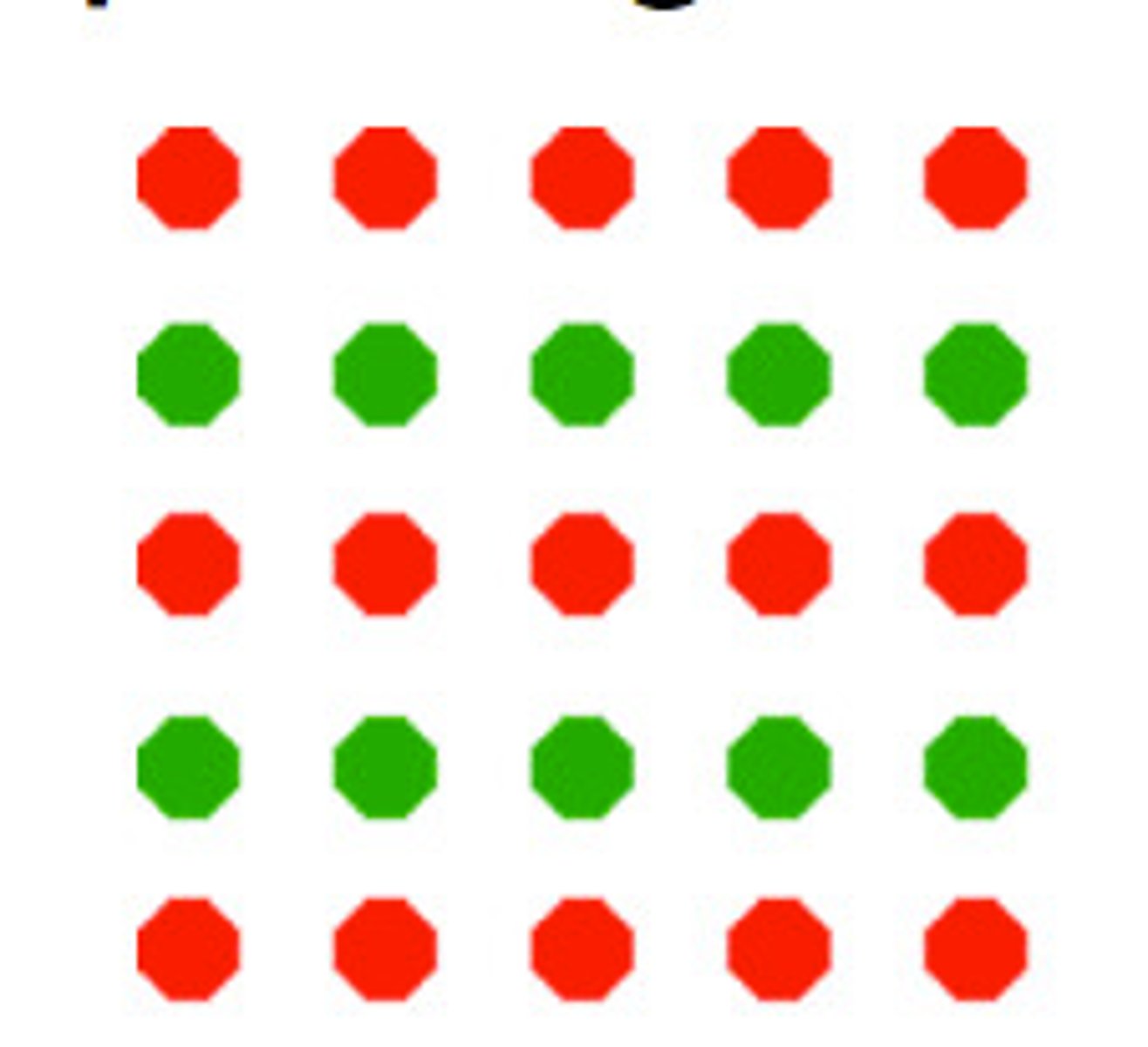
law of PROXIMITY
objects that are near each other are grouped
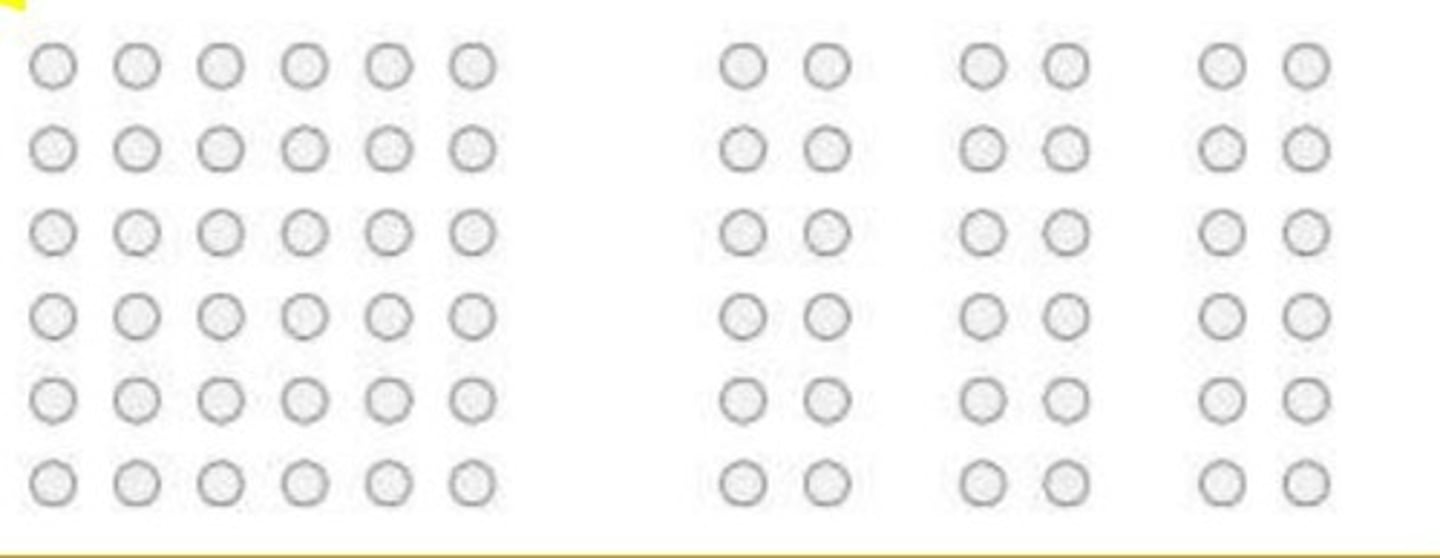
law of GOOD CONTINUATION
contours that flow smoothly are grouped into a single contour
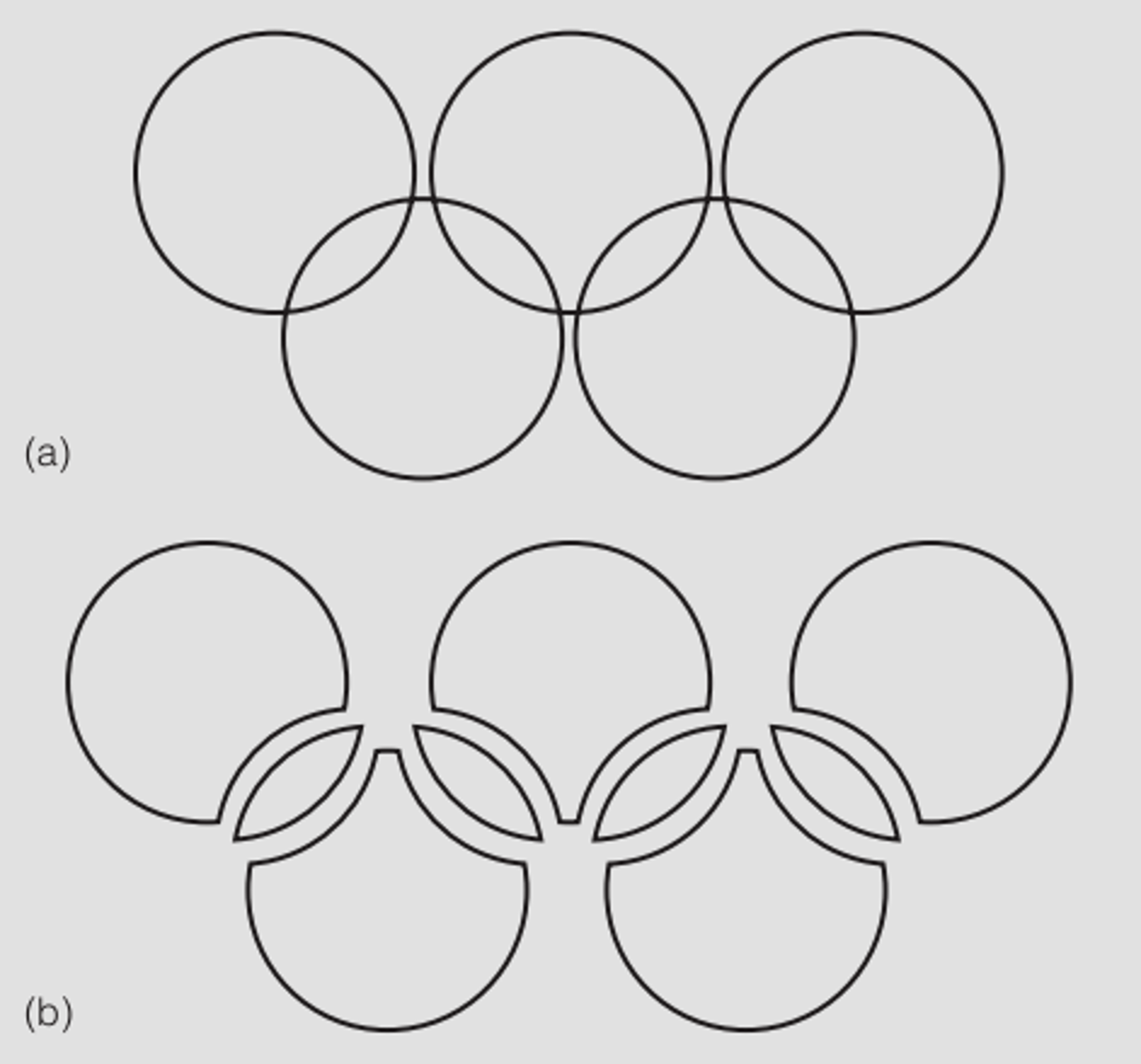
law of COMMON FATE
objects that move in a similar direction or pattern are grouped together
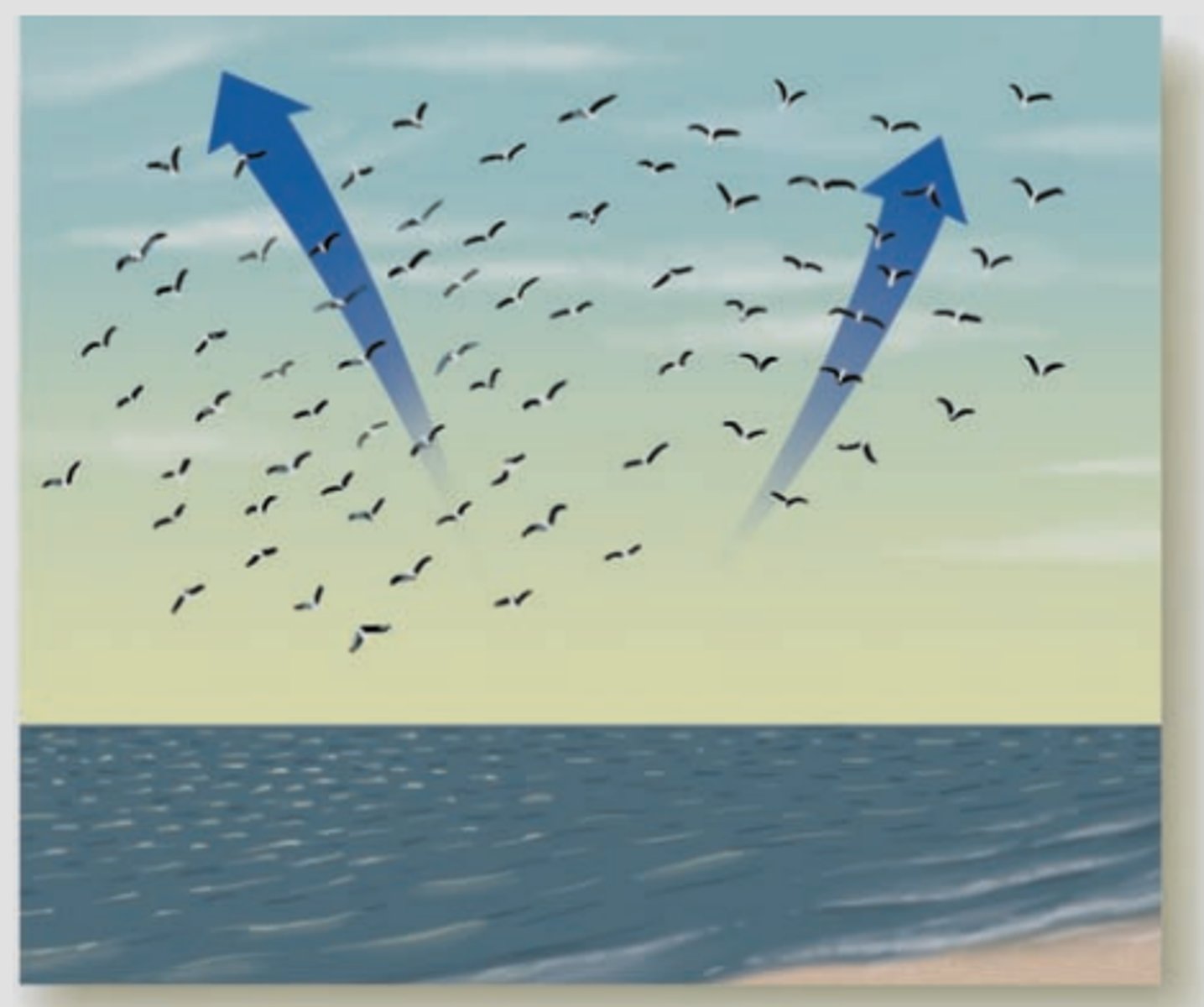
law of CLOSURE
contours that touch or appear to form closed shapes are grouped

why do Gestalt Laws "work"?
because they reflect WORLD REGULARITIES- symmetry, parallelism, good continuation- that have been internalized by evolution
figure-ground perception
automatic distinction between an object and background
principle of non-accident
perceptual interpretations involving coincidental viewpoints/alignment are unlikely
figure side
shaped by the contour (has an outline)
background side
unbounded (does not have an outline)
recognizing contours of negative space...
longer response time, less accurate
why does memory prefer figure ground?
because objects can still be recognized when in motion, but negative space will be less recognizable
figure ground determiner: closure
fully enclosed regions are more likely to be perceived as figure ground
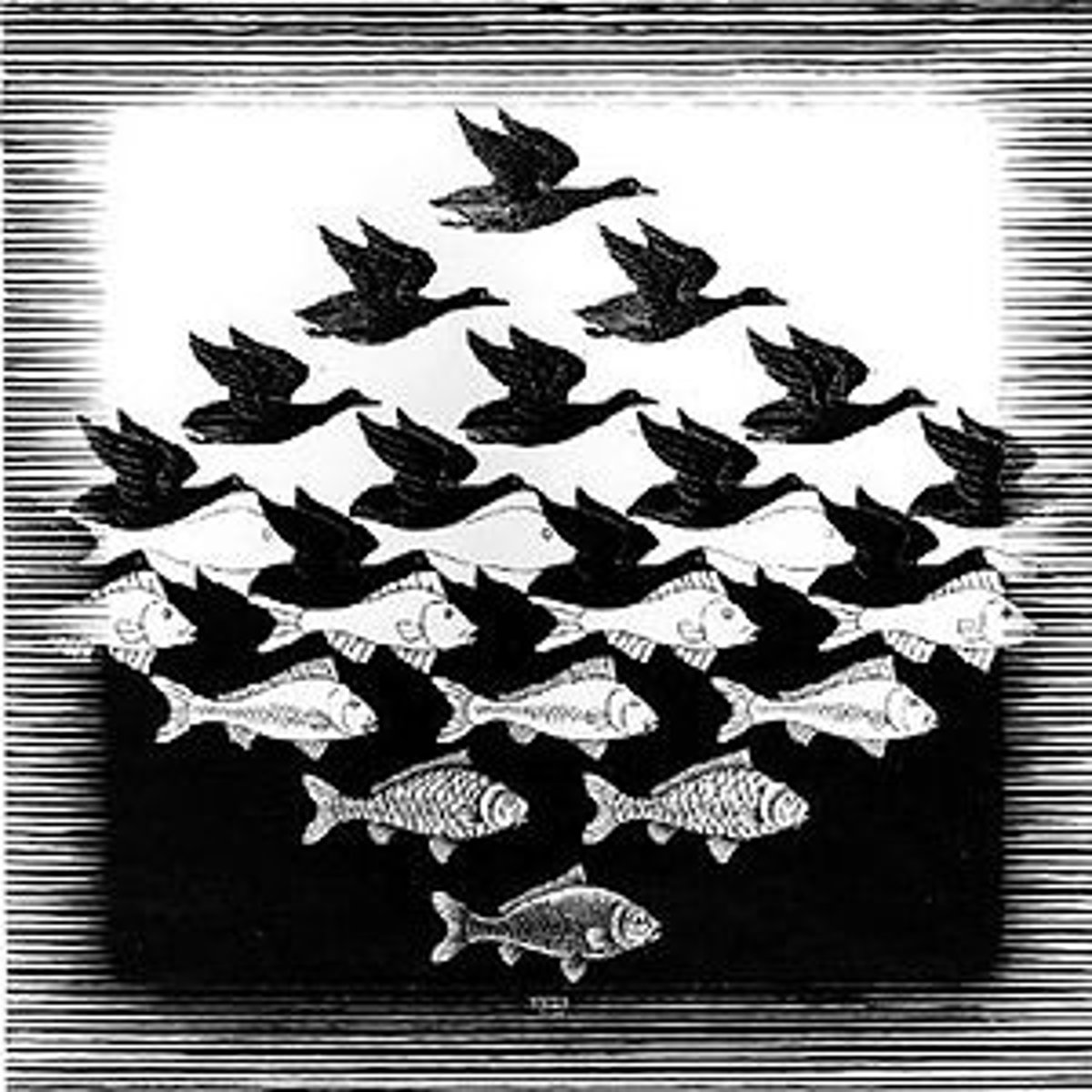
figure ground determiner: size
smaller areas are more likely to be perceived as figure ground
figure ground determiner: convexity
convex contours are more likely to be perceived as figure ground

figure ground determiner: symmetry
symmetric contours are more likely to be seen as figure

the problem of occlusion
most objects are partially hidden behind/covered by others
visual completion
perceived continuity of partially occluded objects

amodal completion
a partially occluded object is completed
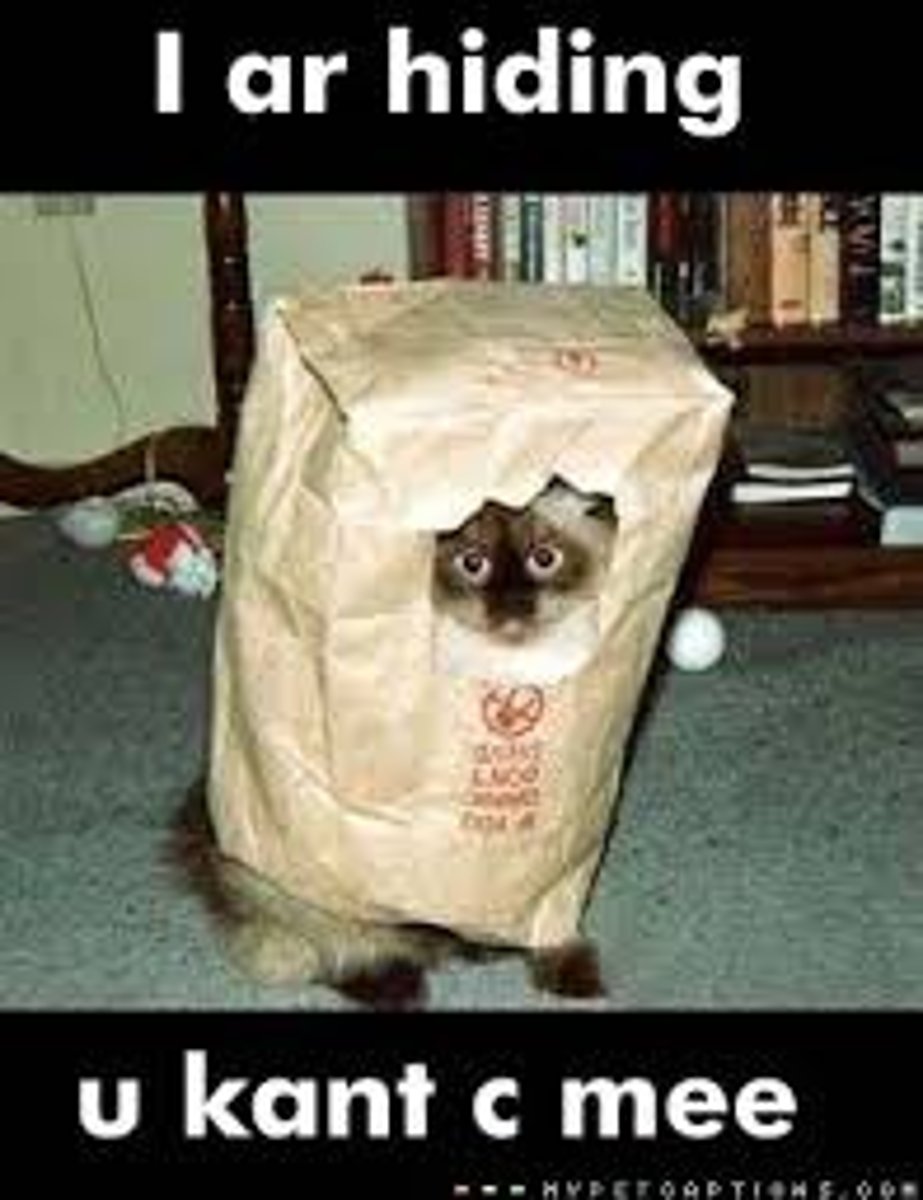
modal completion
an object that is partially camouflaged or seen in low illumination is completed

illusory contours
perceived contours and cues to depth that don't physically exist
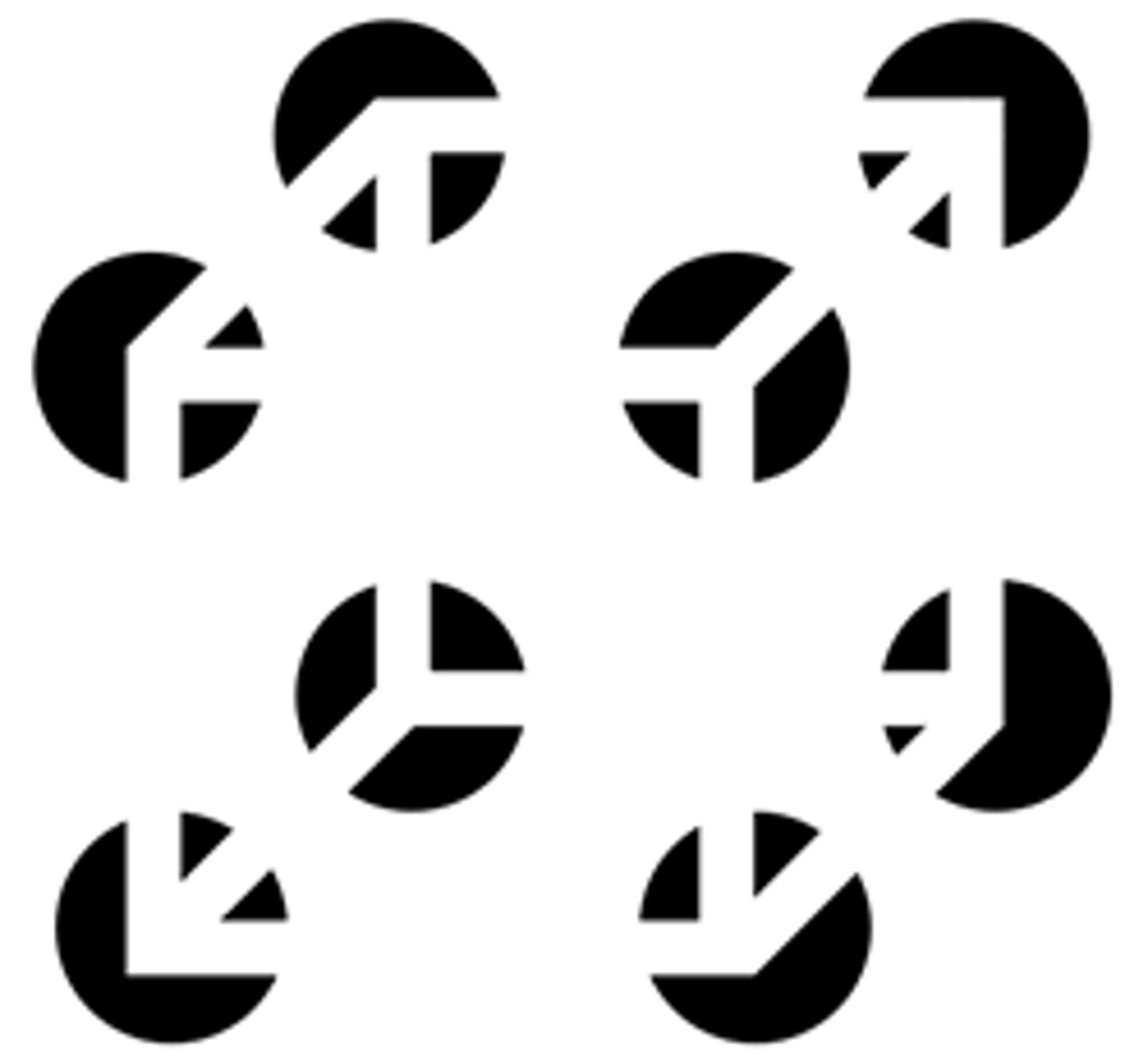
recognition is different from perception because it involves...
memory, categorization, and naming/labelling
Marr and Biederman theory of object recognition
objects are stored in the brain as 3D models with simple parts called "geons"
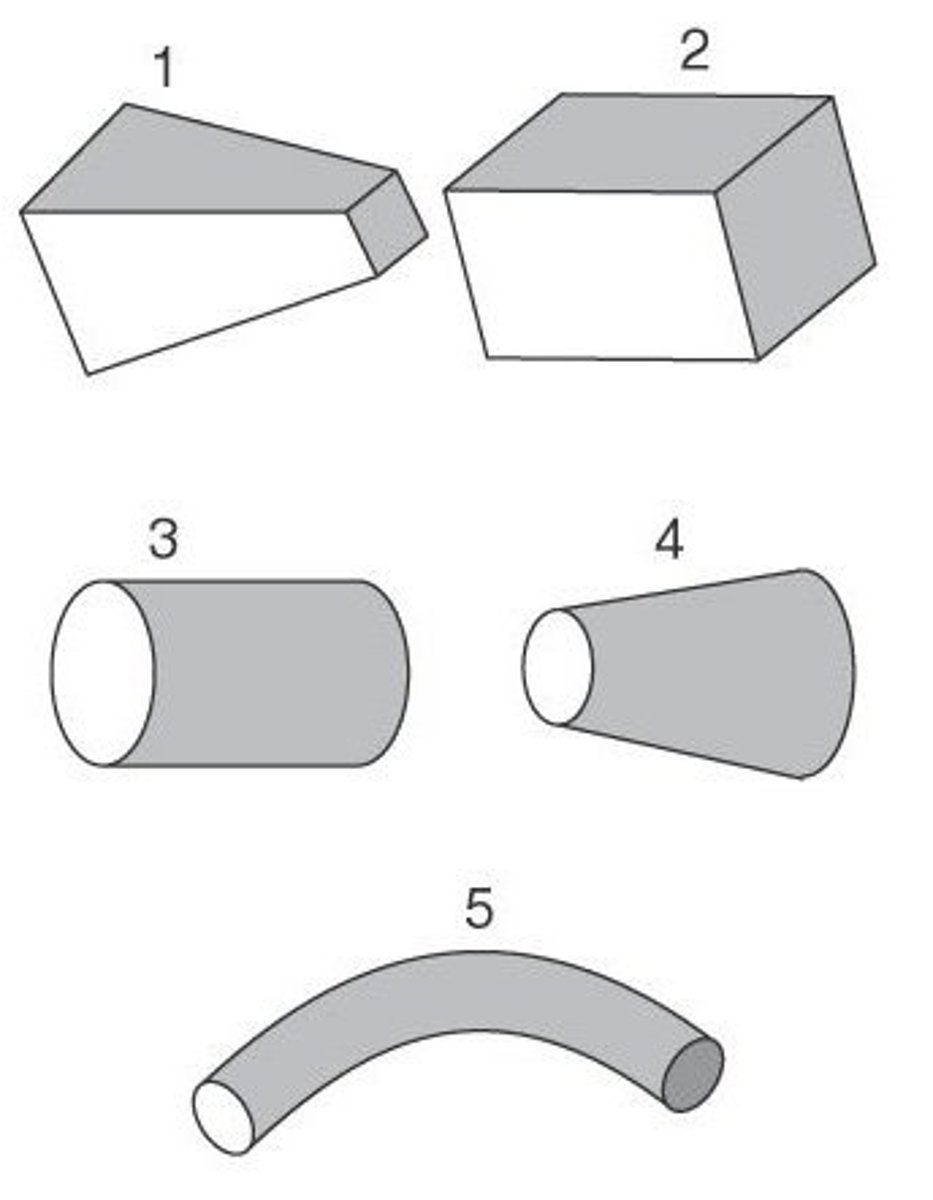
Recognition by Components
all objects can be mentally constructed using geons
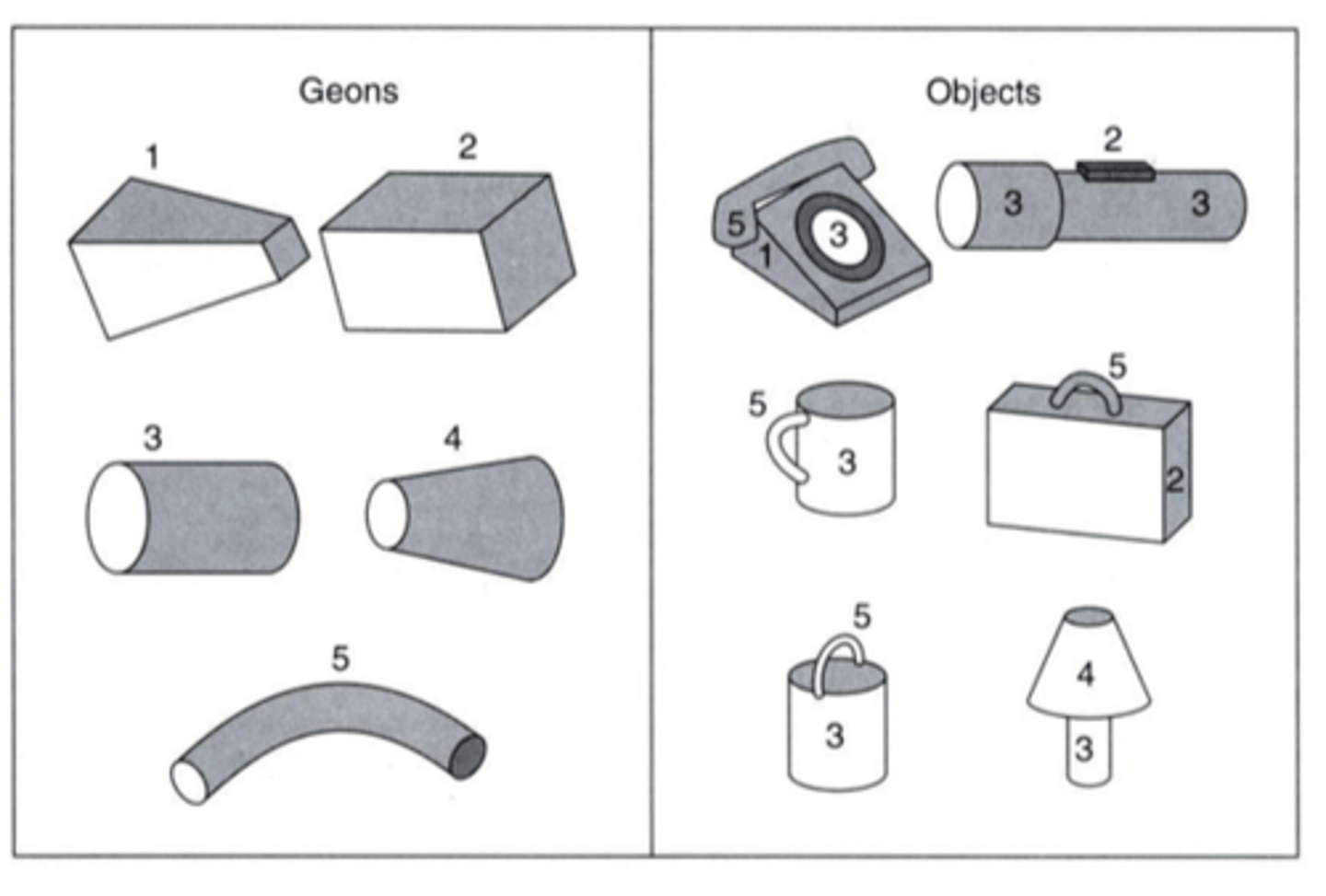
3 properties of geons
1. shape of cross section
2. size of cross section
3. axis curvature
cross section
shape created by making a cut down the center of an object
pros of geon models
- recognizable from ALMOST any viewpoint
- recognizable under partial occlusion
- a small number of geons can be combined into a large number of objects
weaknesses of geon models
- don't contain a lot of info at finer levels of detail
- accuracy drops when recognizing a geon at a different angle from when it was learned
- doesn't account for subordinate level recognition (ex. dog > breed)
View Based Recognition (VBR) model
objects are stored as the compilation of multiple viewpoints
inferotemporal cortex (IT)
area in the cerebral cortex responsible for object recognition, found via lesion deficit method
neurons in the IT
- respond to complex shapes
- have large receptive fields
-response levels rise when presented with complex stimulus
pros of VBR model
- neural responses are translation invariant, they respond no matter the angle and size of stimulus
- respond to partially occluded objects
Fusiform Face Area (FFA)
brain area responsible for facial recognition, found via lesion deficit method
processing faces vs. objects
faces are processed holistically rather than as a sum of attributes, stored distinctly from other objects
Larry and Larry's House study
participants could recognize individual components of Larry's house (the door, the roof) but not facial features (nose? mouth?)
Contrast Reversal and Facial Recognition
facial recognition declines when light and dark values in an image are inverted
Prosopagnosia
face blindness, inability to recognize familiar faces
Monocular vs Binocular
one eye vs two eyes
pictorial depth cues
monocular depth cues found in a single frame (still image)
texture gradient
variations in texture density, number of texture elements per unit area
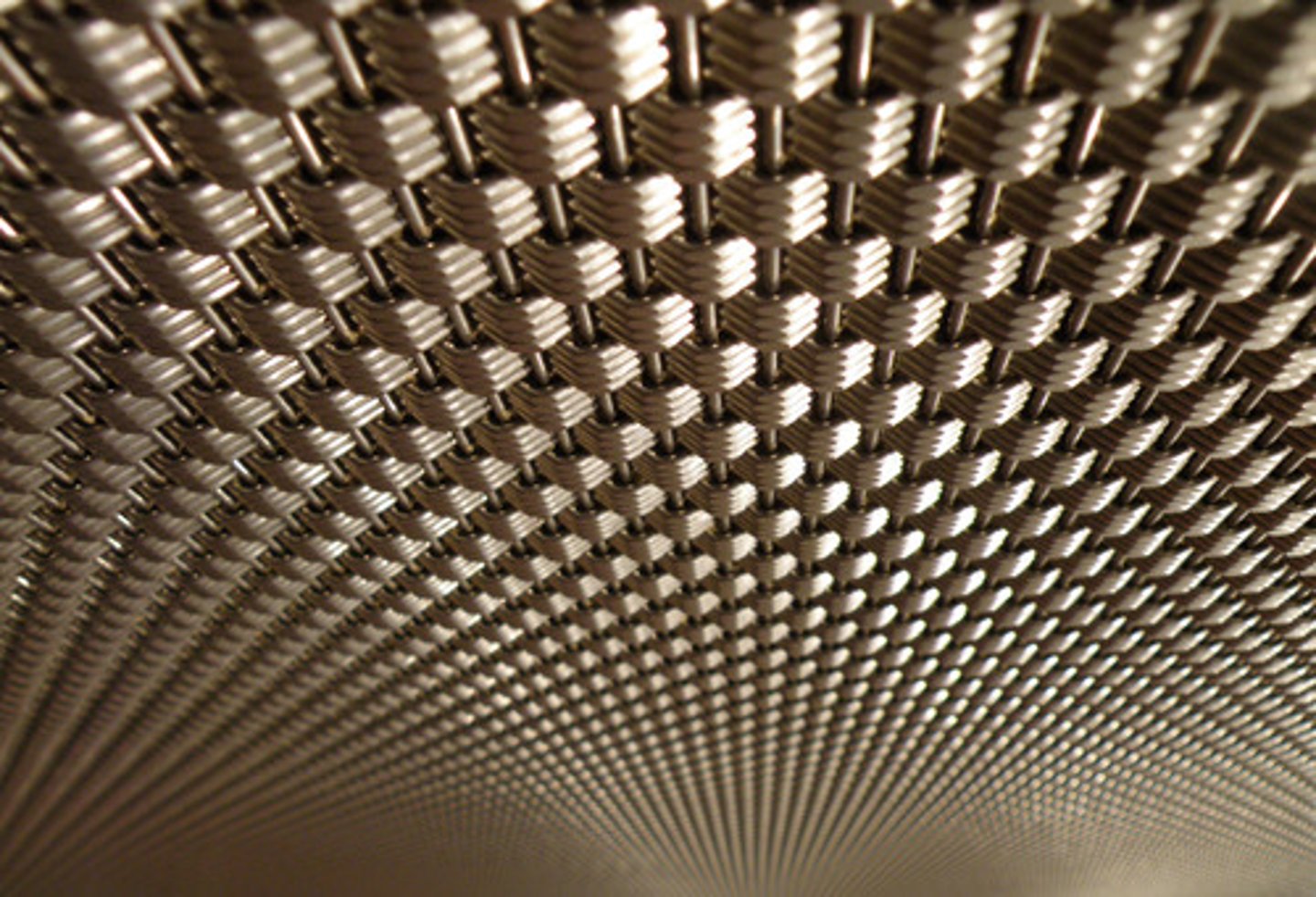
shading
varying light and dark values on a surface
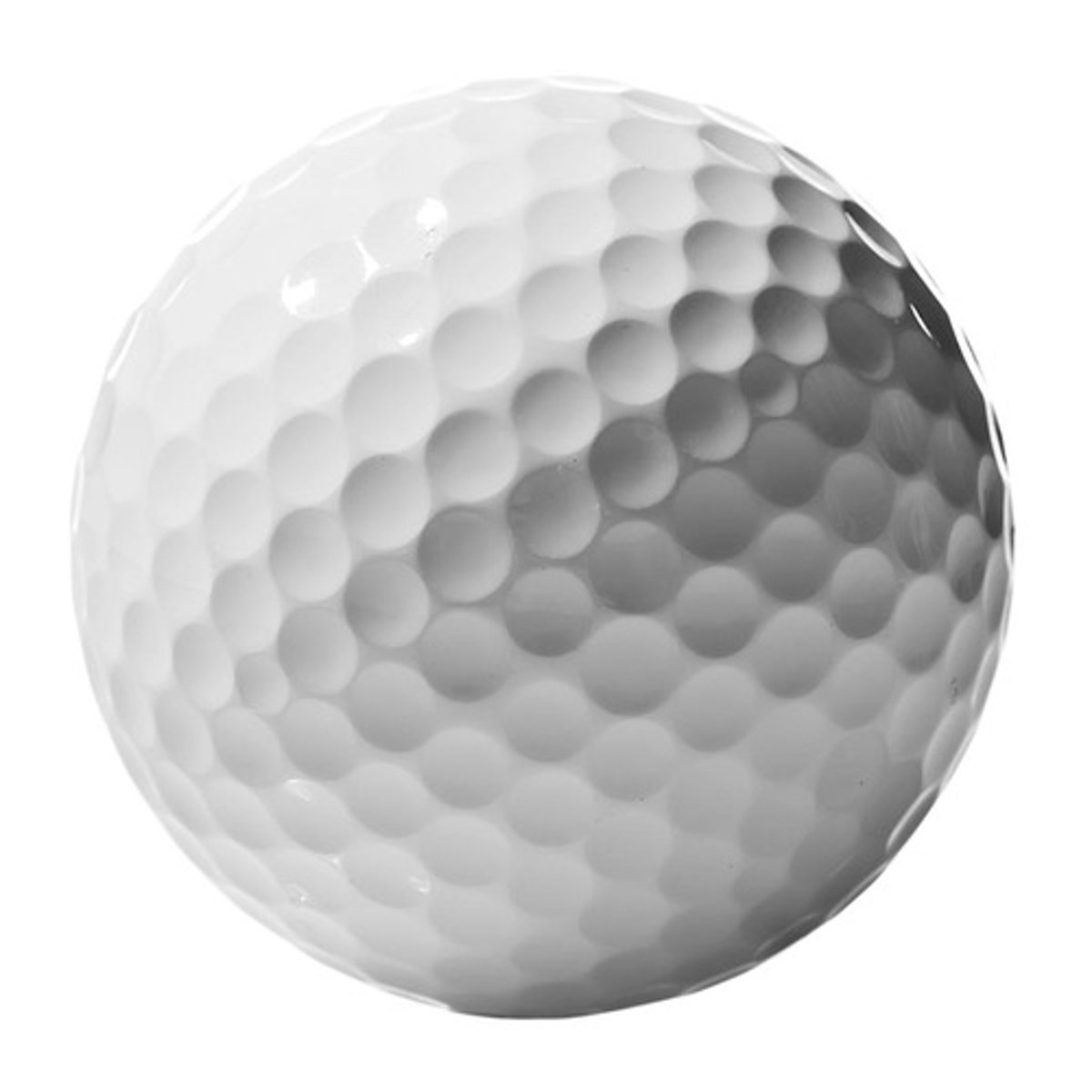
shadows
dark values that imply blocked light

ball-in-a-box demo
the trajectory of the shadow in relation to the ball changes perceptions of depth
kinetic depth effect
perceiving 3 dimensionality as a result of object rotation
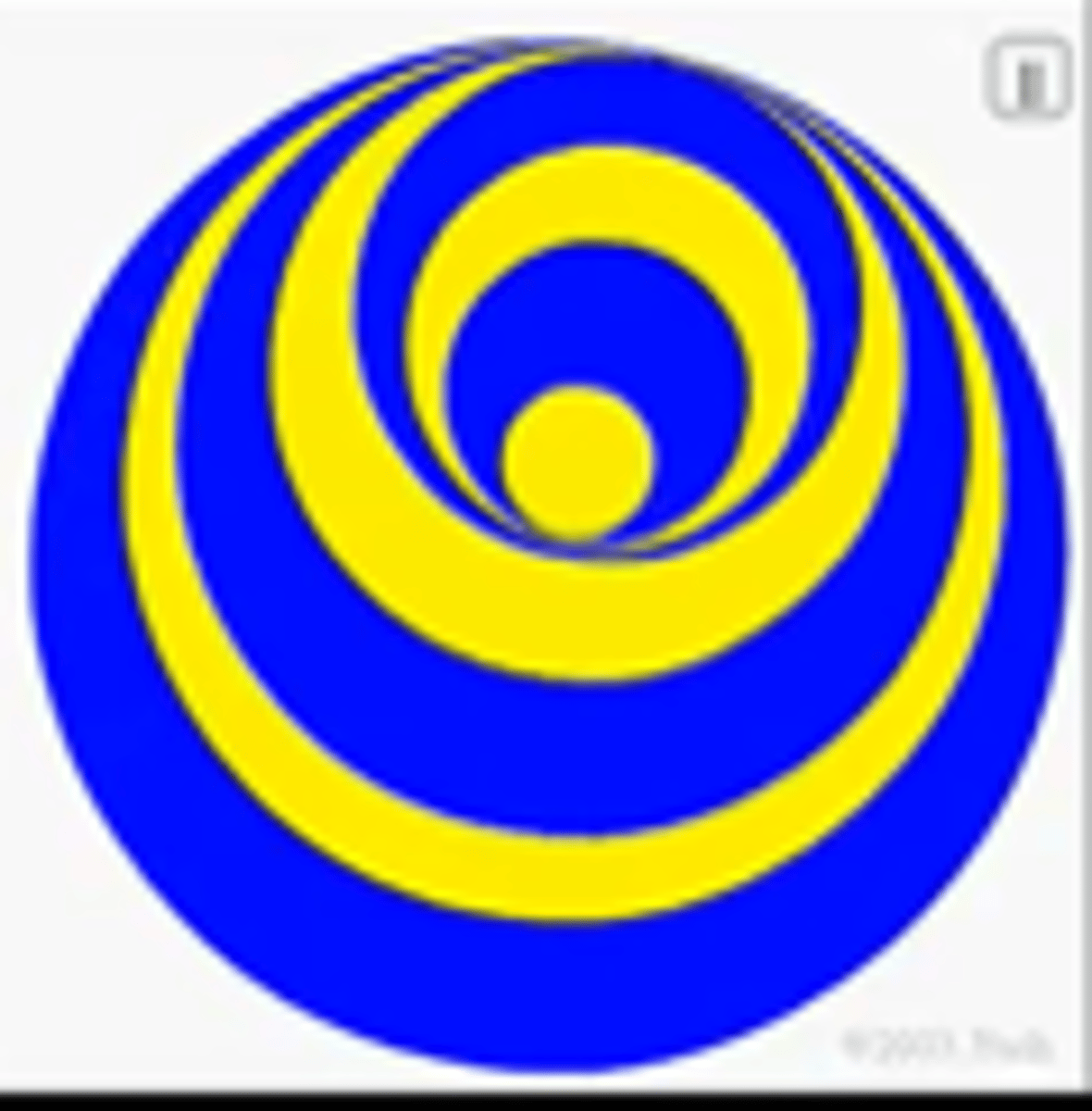
retinal disparity
the difference in lateral distance between objects in the L and R retinal images
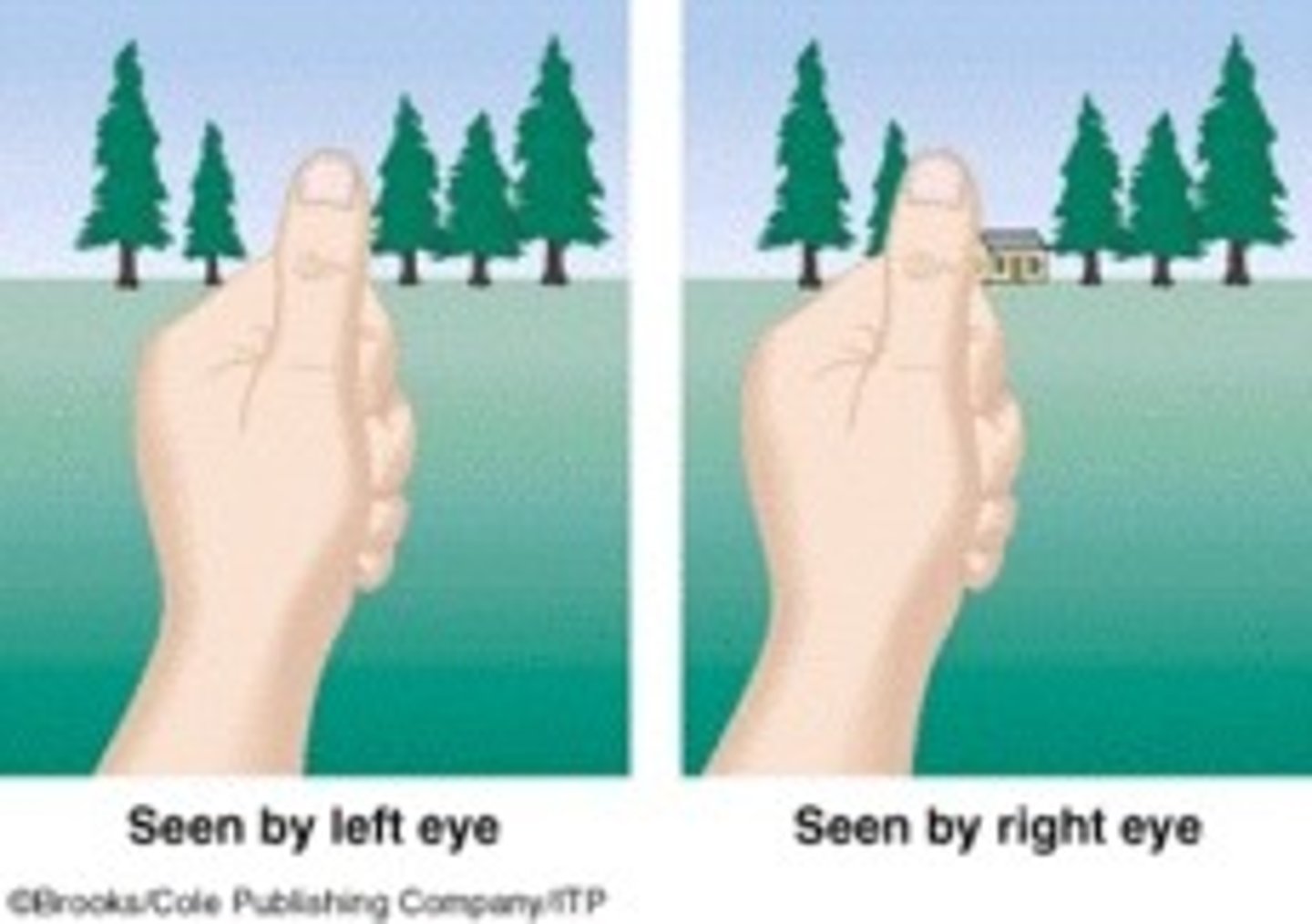
T-junction
where one object "disappears" behind another
transparent X junction
point where four surfaces of different values overlap
contrast polarity
matching direction of contrast implies transparency (ex background is darker on the left so the transparent object is darker on the left)
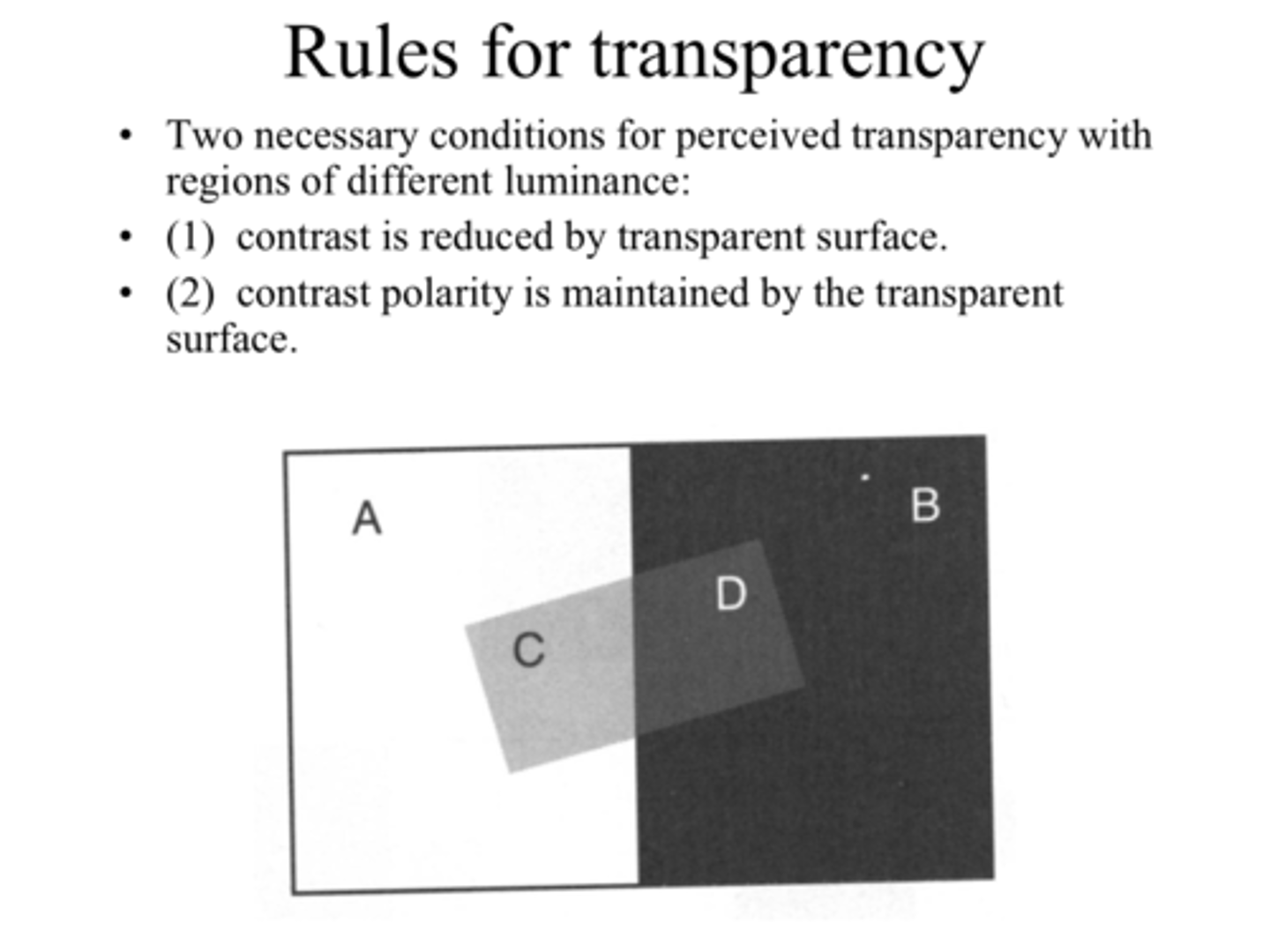
linear perspective
parallel lines converge as depth increases

one-point perspective
all lines in an image converge to a single vanishing point (they don't have to actually touch)
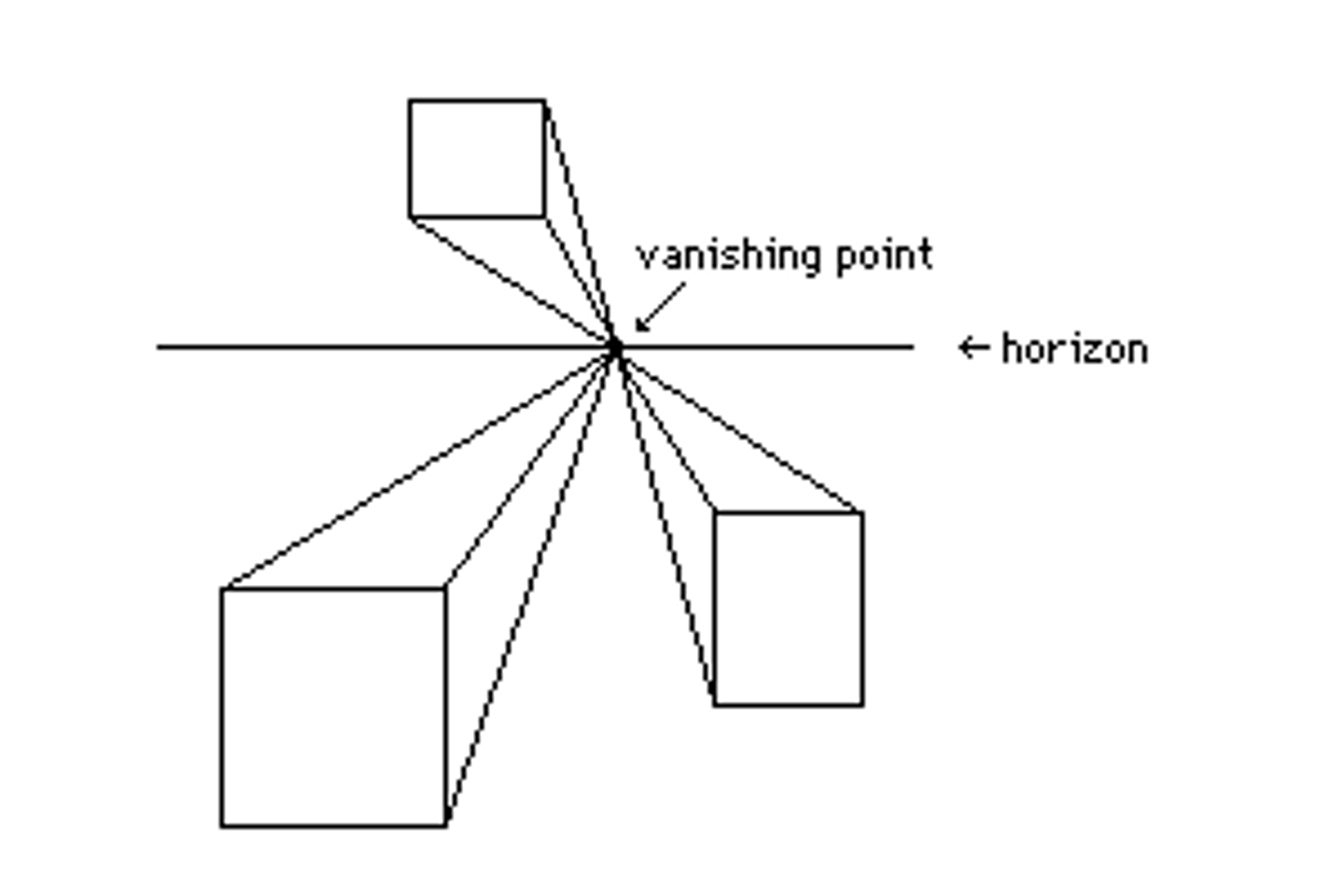
Ponzo illusion
same-sized objects placed between converging lines will look different
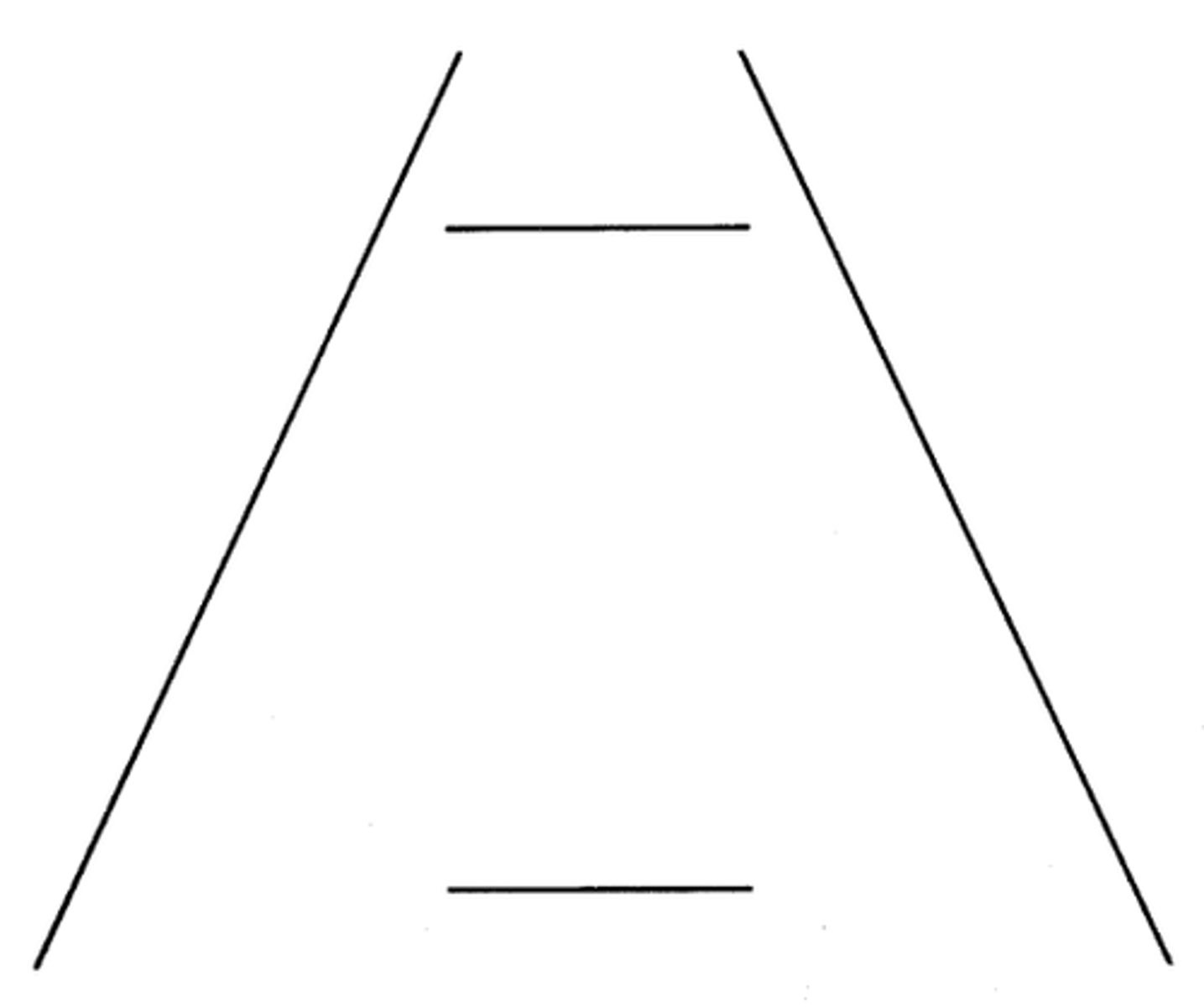
two point perspective
lines converge at two opposing vanishing points
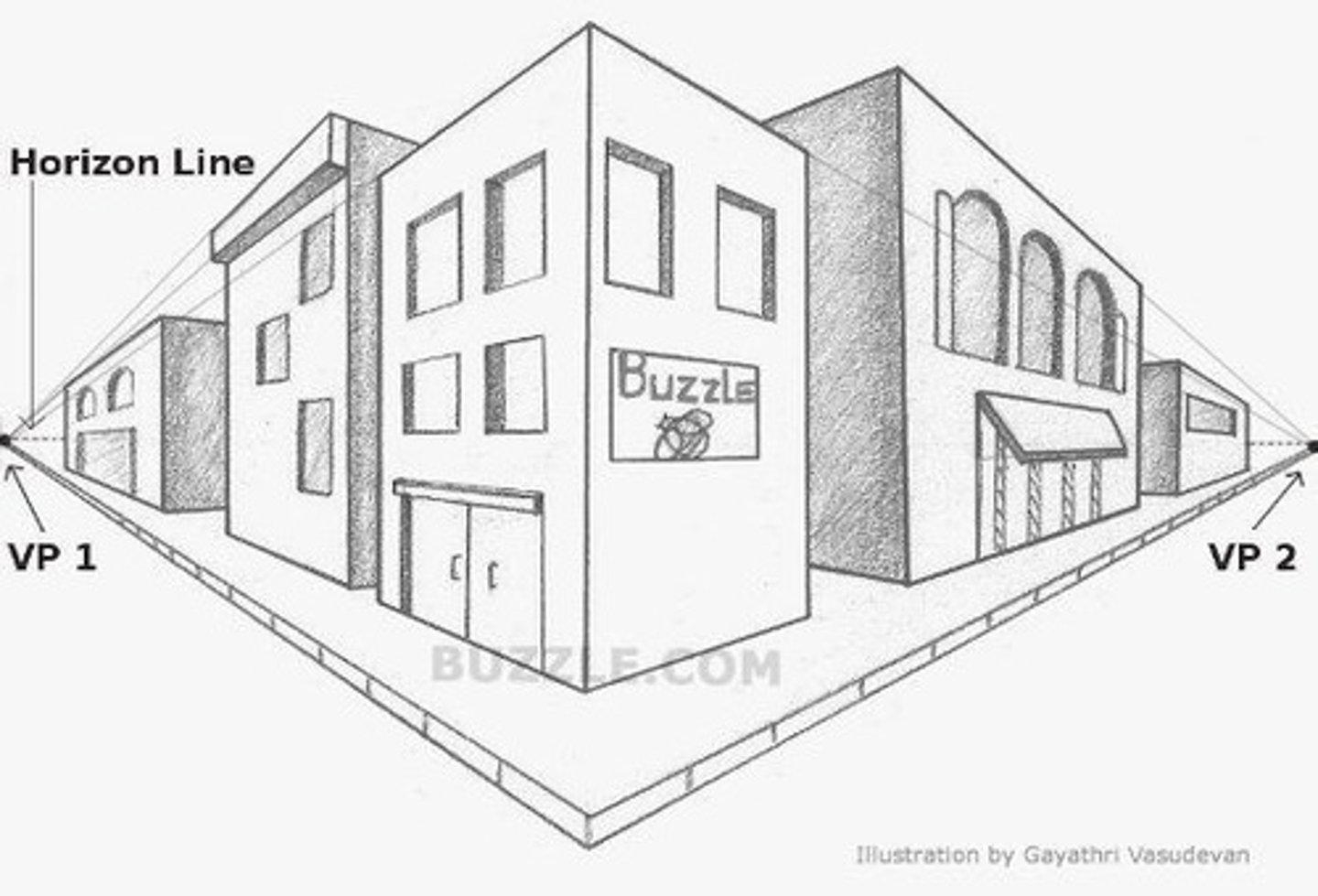
atmospheric perspective
objects become hazier and less detailed as they recede in depth due to scattered light

depth and size
but objects that appear to be father away are interpreted as larger than their fixed size on the retina
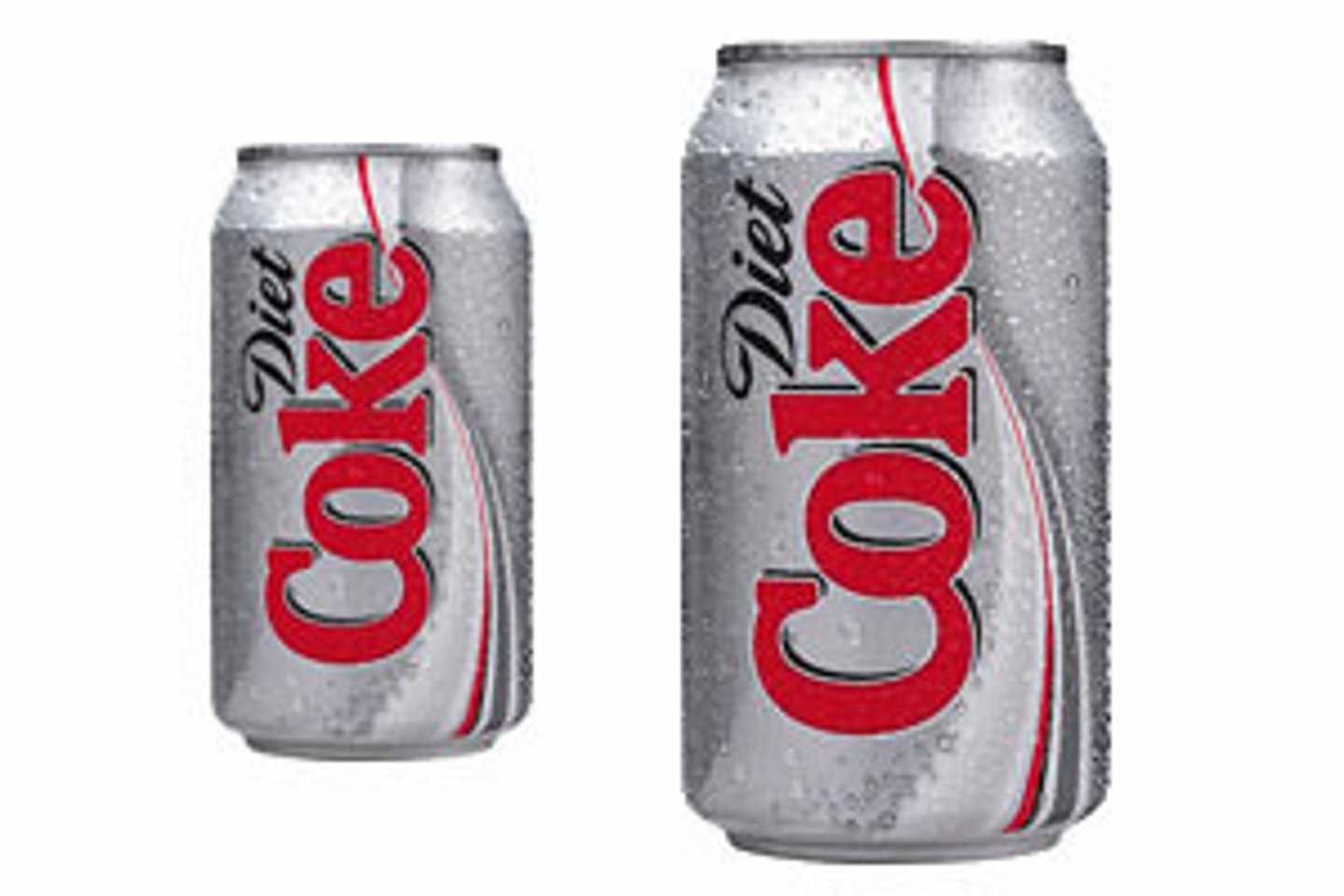
afterimage size
result of fatigued photoreceptors, demonstrates that image size is fixed on the retina
corresponding points
two points on the left and right retina that are the same degree of distance from the center
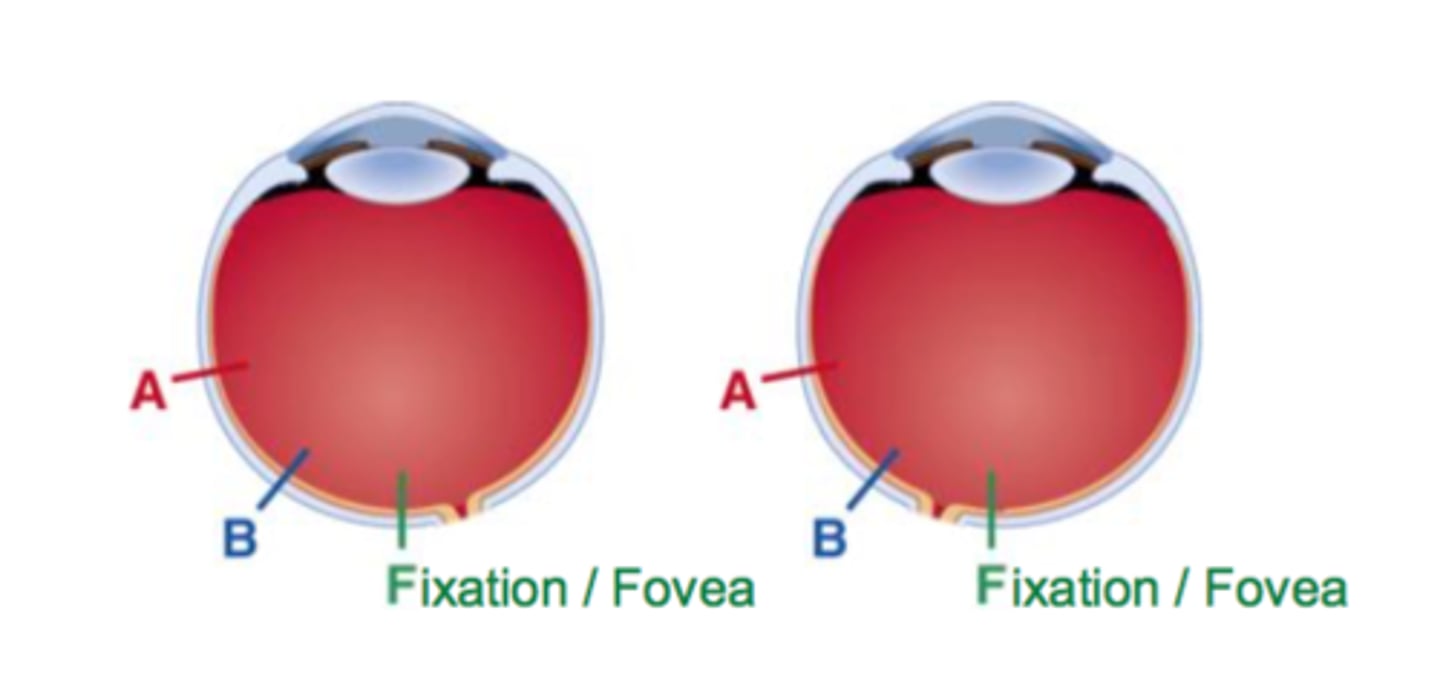
relative disparity
the difference in absolute disparities of objects in a scene
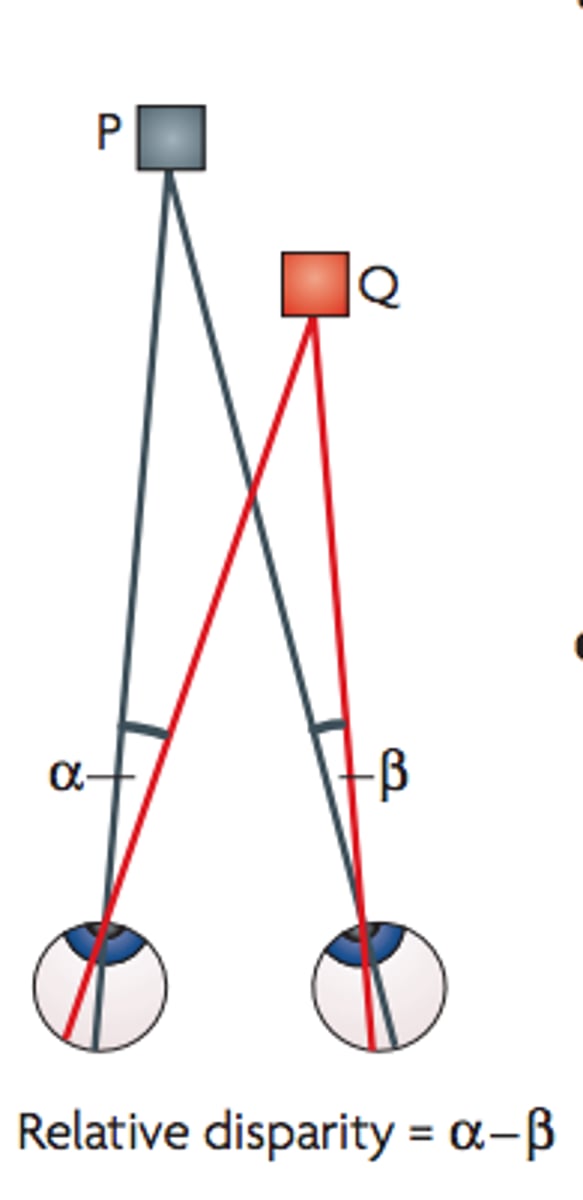
when relative disparity = 0
objects are perceived as being at the same depth
horopter
a curved line that represents objects which have fall on corresponding points and have a relative disparity of 0
stereopsis
binocular cue, 3 dimensionality emerges as a result of retinal disparity
crossed disparity
non-horopter points behind the point of fixation have uncrossed disparity, those in front have crossed disparity
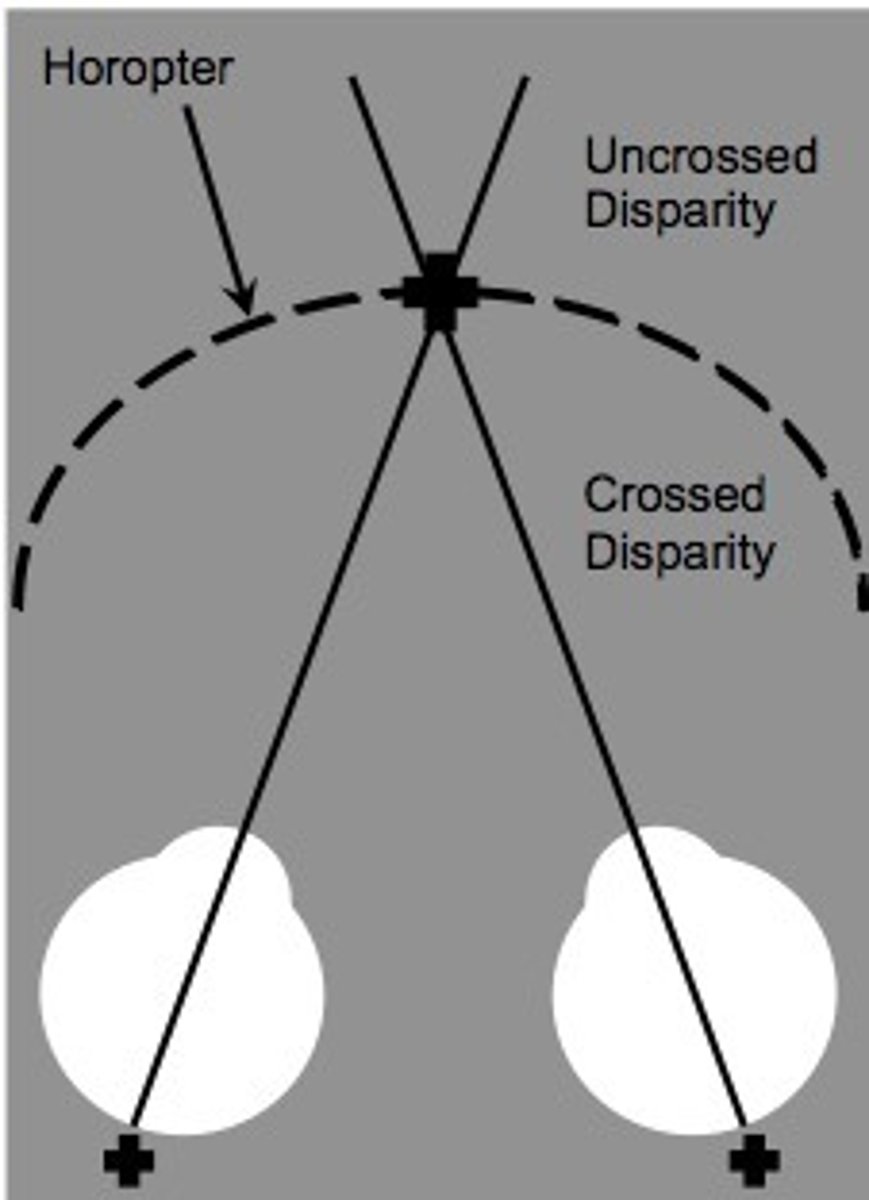
Julesz experimental goal
to disprove the old conception that binocular vision was a result of object recognition between left and right retinal images
random dot stereogram
panels of randomly shaded squares that when viewed through a stereogram produce a 3D image, Julesz
evolutionary significance of color vision
it is evolutionarily advantageous in quickly identifying food sources (ex. red ripe berries)
electromagnetic spectrum
full range of wavelengths of electromagnetic radiation
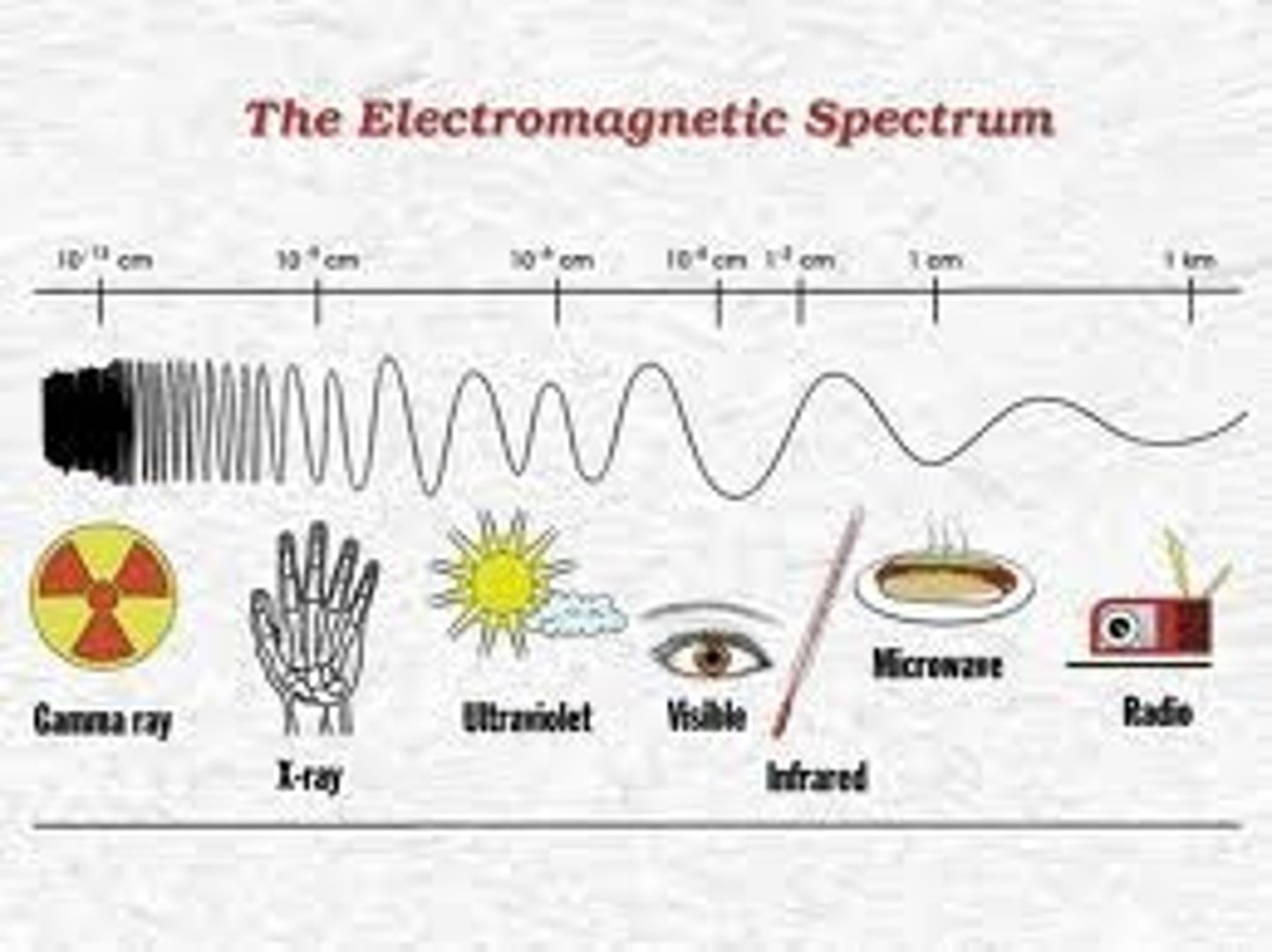
visible spectrum
the range of visible wavelengths

why is wavelength insufficient in defining color?
- fails to explain why wavelength corresponds with color
- physical wavelength can be different from perceived color (ex in different lighting conditions)
T/F: color is an intrinsic property of light
FALSE
reflectance function
the overall percentage of light that is being reflected
luminance
light intensity that reaches the eye
iso-luminant
differently colored but same light intensity
T/F: color is perceptual rather than a physical property
TRUE
Newton's Prism experiments
white light passed through a prism to produce colored beams of light
white light
the combination of all wavelengths on the electromagnetic spectrum
spectral colors
monochromatic wavelengths
T/F: sunlight is highest energy at 450nm
FALSE- near equal at all wavelengths
complementary colors
two wavelengths that combine to produce achromatic light
T/F: yellow + blue = achromatic light and
green + red = achromatic light
TRUE
subtractive color mixing
non-visible colors are absorbed, all that is left is the new color
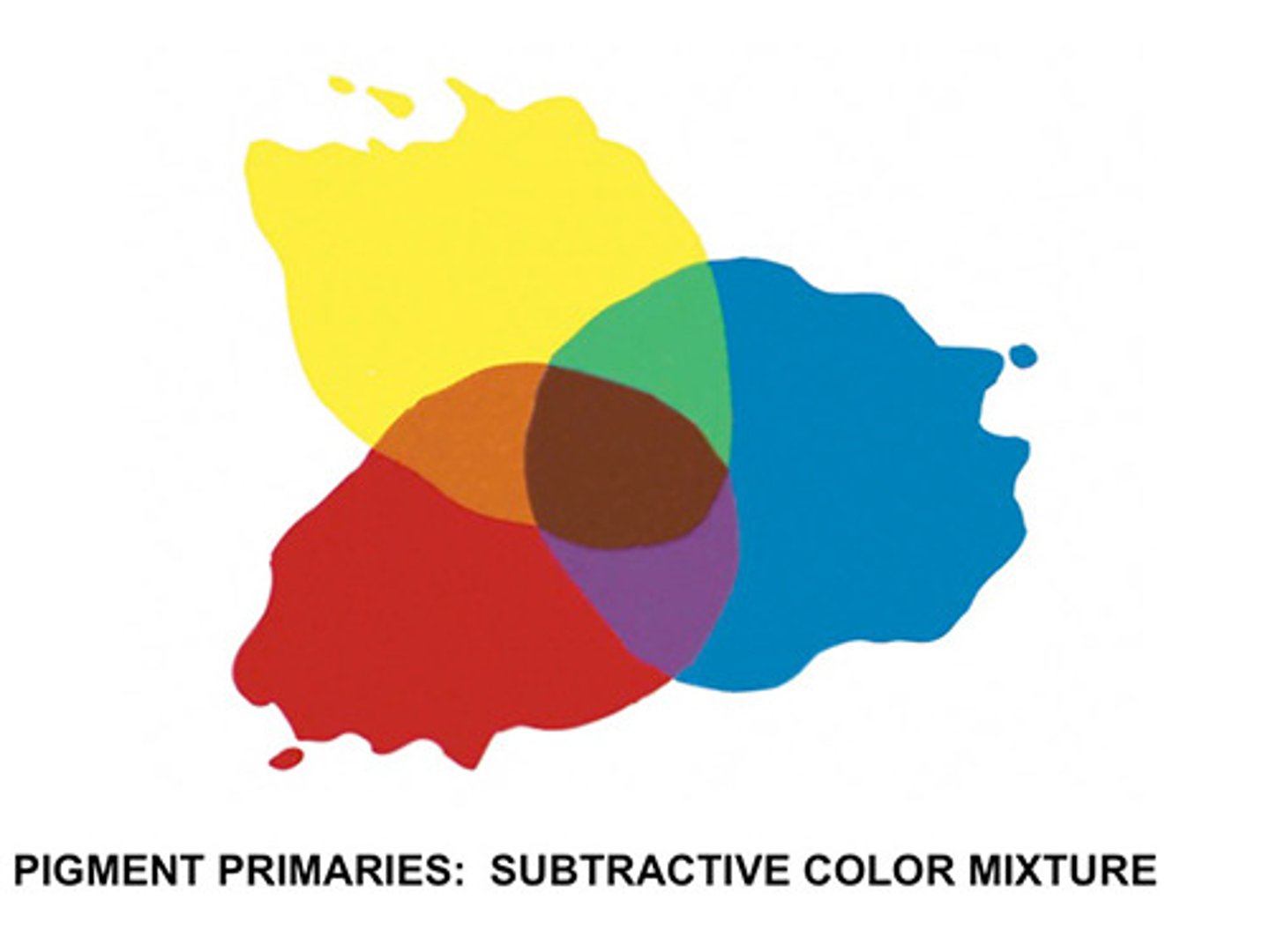
additive color mixing
all present wavelengths are combined
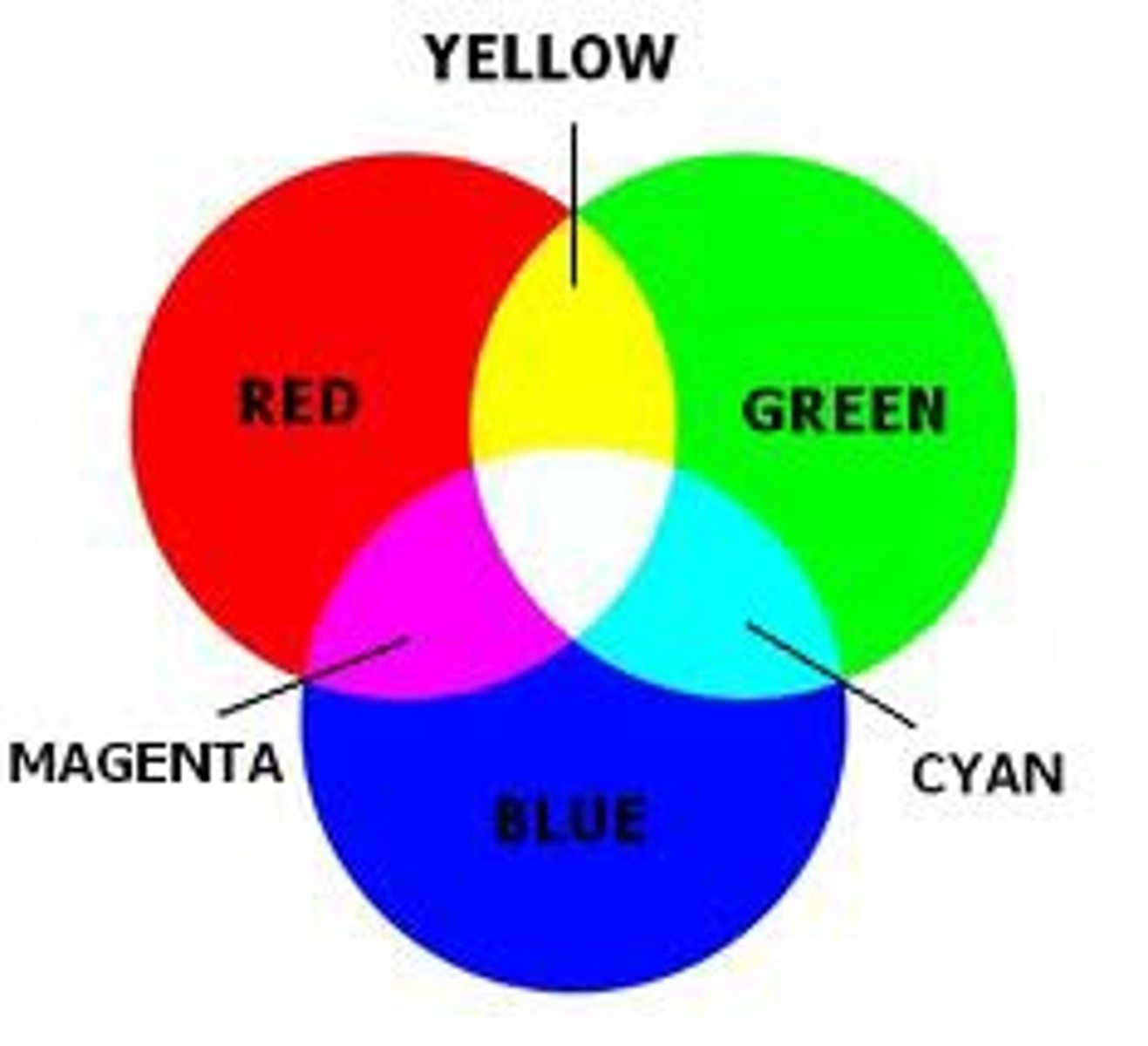
mixing colored paints and pigments
subtractive
mixing colored lights
additive
metamers
mixtures of wavelengths that are physically different but are perceptually identical
univariance principle
cone types do not contain any information about color, only about amount of light being absorbed
absorption rate
percent of light absorbed, in photons
how does absorption rate explain metamers?
the brain cannot differentiate monochromatic light vs combined lights when the net amount of light is the same
L cones respond to
red wavelengths
M cones respond to
green wavelengths
S cones respond to
blue wavelengths
an absorption rate of 50% translates to ?/400 photons
200
dichromacy
only possessing two cone types
trichromacy
posessing all three cone types